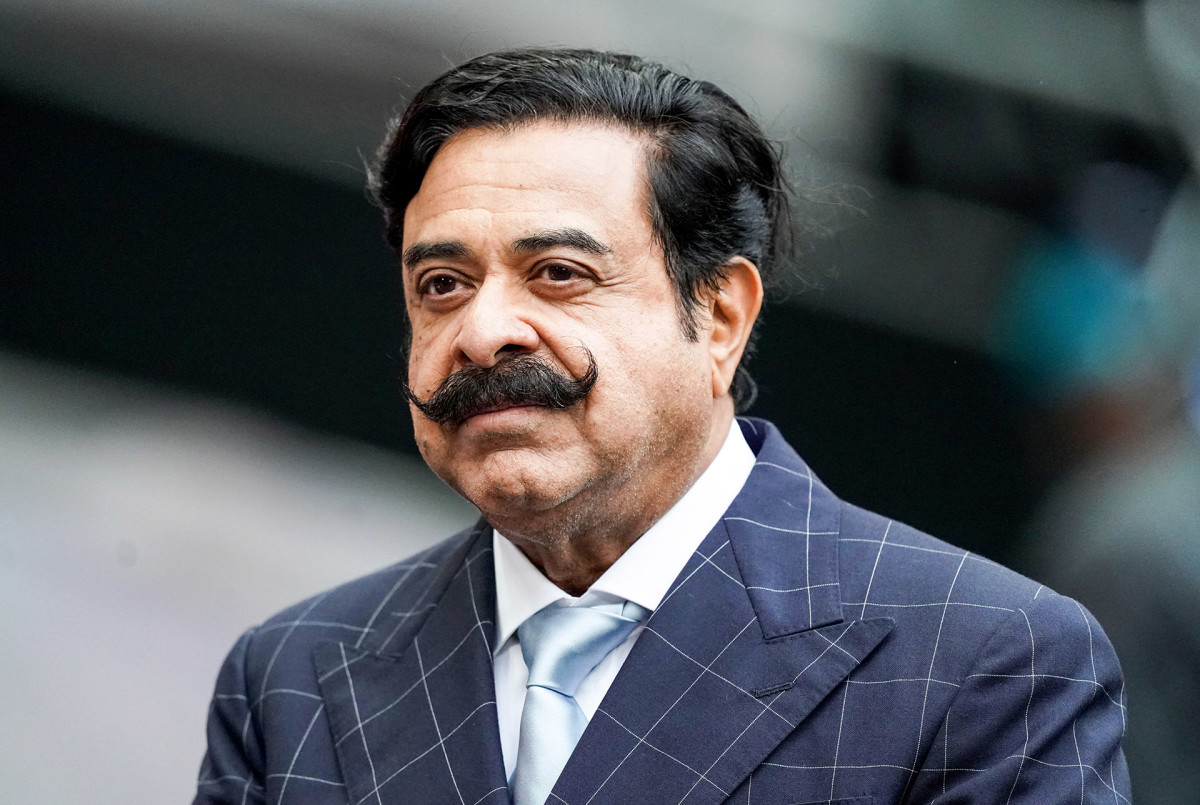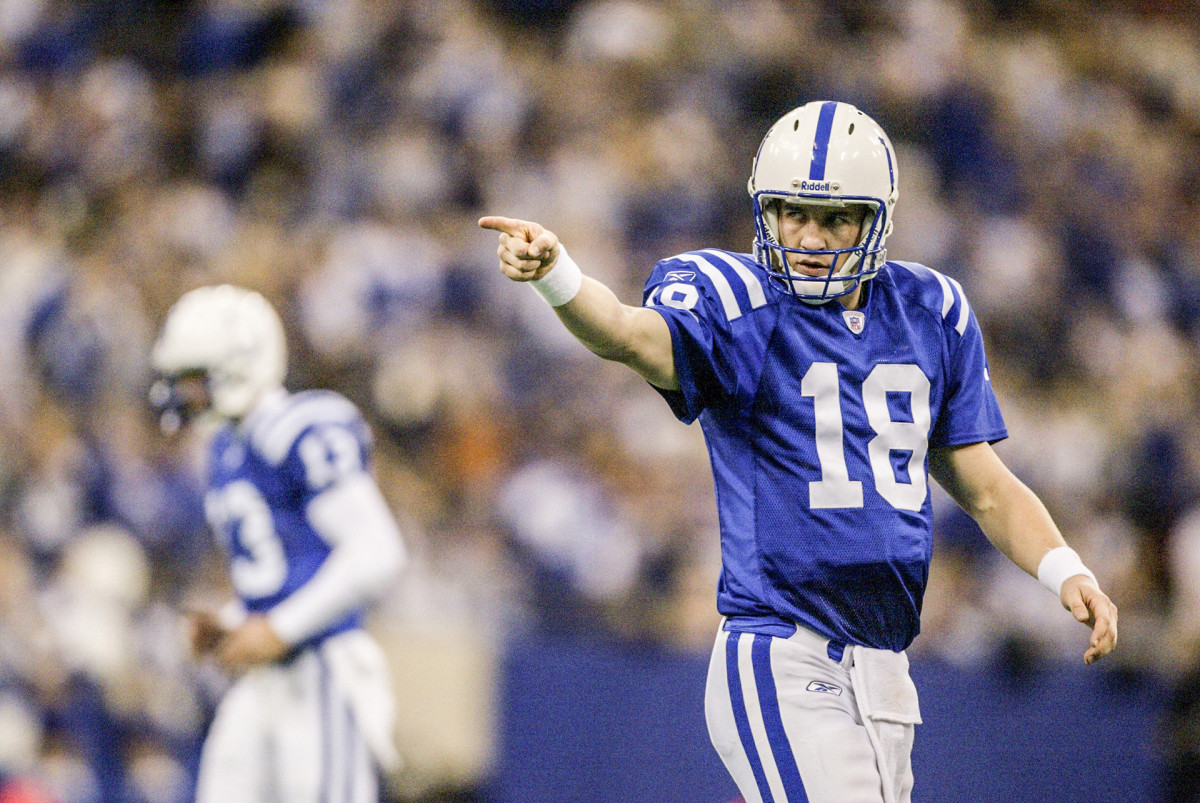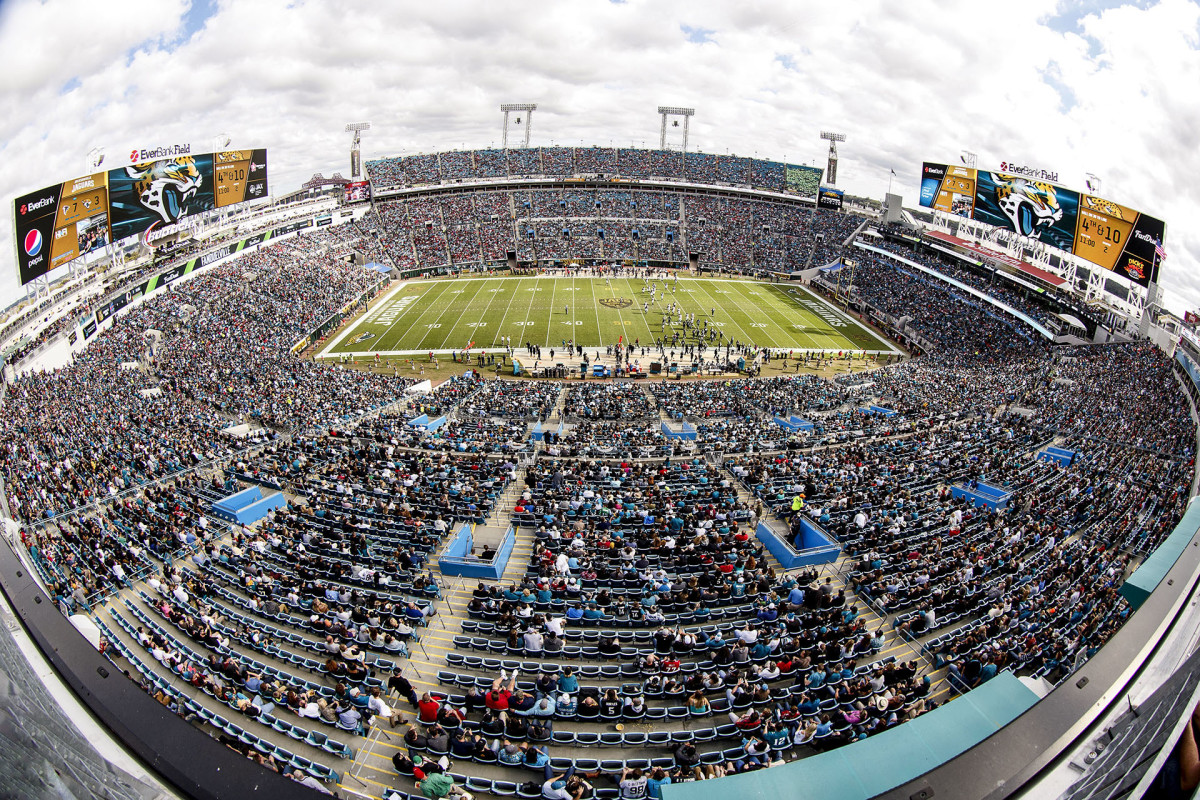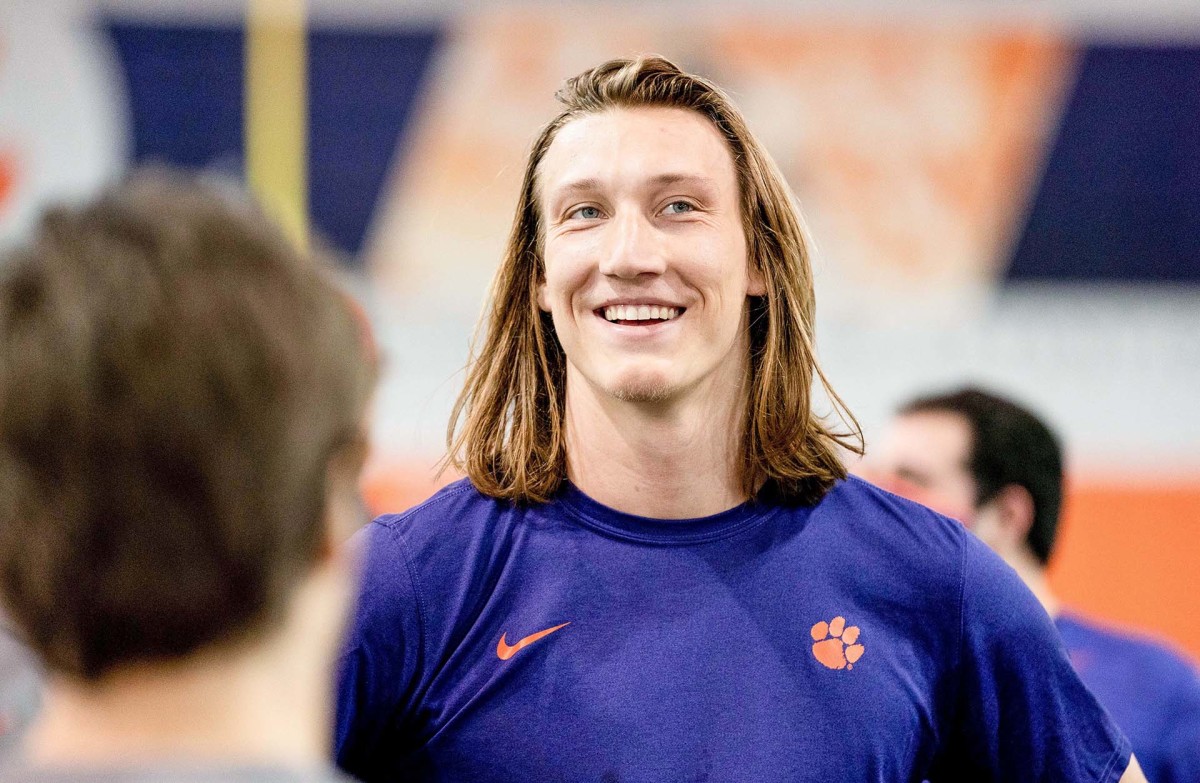The Trevor Lawrence Effect on Jacksonville, the Jacksonville Effect on Trevor Lawrence
April 29 will mark the first day of the strangest of NFL marriages, when the perfect prospect and the imperfect franchise begin their journey together.
Trevor Lawrence has been on the NFL radar since his days at Cartersville (Ga.) High School. He’s 6' 6" but has the quickness and twitchy athleticism of a much smaller man. The ball spins off his hand with preternatural ease. Theoretically, he can run any offensive system an NFL coaching staff can dream up. And as far as the traits translating to production: He won a national title as a 19-year-old freshman at Clemson and left campus with a career record of 38–2. More than that, his distinctive long, shampoo-commercial-quality blond hair makes him the most recognizable prospect to enter the NFL in … perhaps ever.

And it is a foregone conclusion that he’ll be joining the league’s most anonymous team. The Jaguars, as a reward for their 15-game season-ending losing streak, will get to add a generational quarterback prospect to their roster. Lawrence will have a direct effect on the franchise, and vice versa, and the ripple effects of the marriage will be felt across the football world, from the taxpayers in Jacksonville to fans in London to the league offices in New York and the boardrooms of brands around the world.
This is what Trevor Lawrence, Jacksonville Jaguar, means to ...
THE JAGUARS AND THE KHAN FAMILY
On Friday, Lawrence went through the draft-season rite of passage that is pro day. There was nothing to gain, but probably nothing to lose either considering the three years of film he put up at Clemson. Regardless, for NFL scouts who attended the workout, he was exactly as advertised.
“You hear everyone talk about ‘generational talent,’ ” says one evaluator. “Well, the only one I’ve studied who’s like him is Andrew Luck. Between those two, I’d rank Andrew slightly ahead of Trevor. But it’s close.”
Indeed, Lawrence enters the NFL as the surest thing since the last sure thing, former Colts quarterback Andrew Luck, the top pick of the 2012 draft. Lawrence’s pending arrival allowed Jaguars owner Shad Khan to land one of the biggest names in the coaching carousel. Three-time national champion head coach Urban Meyer had been sought after by NFL teams and college programs since stepping down at Ohio State two years ago. It took the promise of Lawrence (along with ownership’s pledge to improve infrastructure and facilities) to lure him out of retirement. Suddenly, a franchise that made one playoff appearance over the past 13 seasons has a chance to turn things around in a span of a few months.

Khan bought the Jaguars in 2012, and his nine years of ownership have been marked first and foremost by losses—105 of them, to be exact, the most of any franchise during that span. It’s also been marked by internal strife. In a nod to nostalgia, Khan hired Tom Coughlin, the franchise’s first and most successful coach, to oversee football operations in 2017. After a surprise playoff appearance in that year, one that fell a play or two short of an AFC title game upset of the Patriots in Foxboro, things imploded spectacularly, the locker room nearing revolt under Coughlin’s tough approach. Coughlin was let go in December 2019.
Worst of all, the Jaguars of the past decade have been defined by their utter irrelevance. Their stadium is never full—the empty seats in TIAA Bank Field’s upper sections have often been covered in tarps. Since NBC began airing Sunday Night Football in 2006, making it the premiere game on the weekly NFL schedule, the Jaguars have appeared a league-low two times—once was a playoff game after the 2007 season, and the most recent appearance was in 2008. They were flexed out of an SNF appearance in 2018, when they were five games into a seven-game losing streak.
Perhaps the best comparison for where the Jaguars sit at this moment is the 1998 Colts, who drafted Peyton Manning first overall. It isn’t a perfect comparison. Former Colts general manager Bill Polian believes that Manning walked into a team with a bit more talent than the current Jaguars have on offense; in ‘98, Indianapolis already had future Hall of Famers Marshall Faulk and Marvin Harrison on the roster. He also points out that while Manning was highly regarded, he wasn’t a consensus No. 1 overall pick like Lawrence is; Manning was competing with Ryan Leaf. When the Colts secured the top pick, as Polian says, “there weren’t parades in the streets.”
Due to the current state of the world, there haven’t been parades in Jacksonville either. But the fan base took to parading through social media as a consolation—some even celebrated when the visiting Bears scored a touchdown early in a Week 16 blowout, knowing it moved them closer to Lawrence. With the Jets upsetting the Browns 900 miles north, that game clinched the top pick for the Jaguars.

The Colts then, like the Jaguars now, needed more than just a face of the franchise in the late ‘90s. They needed an identity. During the first 14 seasons after relocating from Baltimore, the Colts were one of four franchises to lose more than 60% of their games (excluding the Ravens, over two seasons after relocating from Cleveland). They won a total of two playoff games. Only the Cardinals appeared on Monday Night Football, the league's weekly spotlight game, fewer times than Indy (6) during that span. The year before they drafted Manning, the Colts went 3–13 during a season in which Jim Harbaugh, Paul Justin, and Kelly Holcomb started games at quarterback.
After a rocky rookie season, Manning lifted the organization to new heights. They made the postseason 11 times in 13 seasons and won a Super Bowl. The quarterback won NFL MVP four times and Super Bowl MVP once, the bulk of a career that earned him his upcoming enshrinement into the Pro Football Hall of Fame. And when he missed the entirety of the 2011 season with a neck injury, Polian realized exactly what they had.
“During the year when we didn't have Peyton, I was getting on a bus to go to a game midway through the season,” Polian says. “One of our coaches came up to me and he said, ‘You know, for 13 years, we've gotten on this bus knowing that we had a chance to win no matter what happens because [No.] 18 is here. And now 18 is not there, and it's a very different feeling.’ That captures it.”
Lawrence might very well make the Jaguars an immediate contender in the AFC South. But even if he doesn’t, for the first time in the Khan era, it feels like the Jaguars matter outside of northeast Florida.
THE TAXPAYERS OF JACKSONVILLE
“I think we want to ride or die with Trevor Lawrence. This is who we’ve been talking about for four months now.”
Reggie Gaffney is like a lot of Jaguars fans, ever since the 2020 season went off the rails. Of course, his opinion is a little more important than most fans’. Gaffney also represents District 7 on the Jacksonville City Council, a body that holds a lot of sway over the franchise’s future in northeast Florida.
The Jaguars’ main focus off the field the past few years has been upgrading their home stadium, TIAA Bank Field, where the team has played since its inaugural season in 1995. In January 2018, they first introduced the idea of a new entertainment complex around the stadium, in a space labeled Lot J.
Khan and team president Mark Lamping had long championed a Lot J deal as a “catalyst” to the development of Downtown Jacksonville. By building in what is essentially an empty parking lot, the franchise hoped the stadium and surrounding area would be the centerpiece of a revitalized downtown, bringing hotels, office space, an entertainment complex and housing with it.
The kicker, of course, was that it would cost millions of taxpayer dollars. The public-private partnership deal had a proposed $445 million price tag. The developers were set to be a joint venture between Gecko Investments, LLC (a subsidiary of the Jaguars) and Jacksonville I-C Parcel One Holding Company Investors, LLC (an affiliate of The Cordish Companies, a Baltimore-based developer). The project would have seen the city borrow $208.3 million to fund the investment, which would have included a $65.5 million no-interest, 50-year breadbox loan from the city to the private development group. Ultimately, the city would have been on the hook for an investment of $233.3 million in the agreement, though the initial borrowing of more than $200 million suggested the price tag likely would have been higher. A report from the Council Auditor’s Office in November estimated a total debt service cost over 30 years: $365.8 million.

Along with the taxpayer burden, some in the community and on the city council decried the lack of transparency involved in negotiating the deal. Public opinion on the project was largely negative, but that started to change a little before 7 p.m. ET on the Sunday before Christmas, when the Jets sealed an upset victory over the Rams in L.A. With that, the Jaguars had sunk to the bottom of the NFL standings for the first time, putting them in position for Lawrence and providing an unexpected jolt to the team’s hope for a revamped home.
One week later, after a second Jets win had clinched the top pick for Jacksonville, city leaders were entering the final phase of discussions around Lot J.
“I thought once we were going to get the No. 1 pick, Lot J would become much easier,” Gaffney said before the final vote. “And I did feel some of my colleagues kind of soften up, because even around us, we are hearing people talk about what it's going to be like next year to be a Jaguars fan.”
The development deal went to vote on Jan. 12, needing a two-thirds majority among the council’s 19 members—13 votes. It got 12.
That the vote failed despite a rare spike in excitement regarding the Jaguars is an indictment of the proposed project. And, in a way, it was the first loss of the Trevor Lawrence era, coming eight months before his first NFL game.
Following the vote, Lamping said the plug would officially be pulled on Lot J and that the team and developers would move on to the next project, saying the Jaguars were still committed to being part of Jacksonville’s downtown revitalization, and suggesting the city’s shipyards.

TREVOR LAWRENCE AND HIS BRAND
The “when” was already stacked against Lawrence. Go back a decade and the idea of a tall, handsome generational quarterback prospect with flowing blond hair after years of success at a collegiate powerhouse would represent the most open-and-shut case in the history of athlete sponsorship. Indeed, Lawrence was at one point the archetype for a brand pitchman and checked all the theoretical boxes. But as one veteran sports marketing rep who deals with high-profile quarterbacks in the league says, the boxes have changed. The world has changed. The league has changed. And the long-held perceptions of what a quarterback looks like have changed.

First, the obvious: Lawrence is coming into the NFL at what is (hopefully) the tail end of a yearlong pandemic that fundamentally altered the business plans of every retailer in the world. Last year, most major apparel brands were quiet around the draft, a trend that could continue into 2021. For example, Nike announced a deal with Kyler Murray in the moments before the 2019 draft. Joe Burrow’s pre–2020 draft endorsement list, which included Fanatics, Lowe’s and Nerf, was absent a significant sneaker deal. Justin Herbert, a top-six pick from what is virtually a Nike satellite campus at the University of Oregon, didn’t even get a Nike sponsorship. (Though Herbert said at the beginning of February, a few months after he was named rookie of the year, that a Nike deal is in the works.)
Second: There still may not be youth sports or high school sports in some areas of the country in 2021. What is a company’s immediate return on investment if there is tempered enthusiasm for athletics in general, dwindling enthusiasm at the youth level for football even before COVID-19 and a complex shifting of the sport’s demographic fanbase and average age?
Back in 2014, even Jadeveon Clowney, who plays a far less marketable position, netted a shoe deal with Puma (even though Puma did not have a deal with the NFL and, thus, was not allowed to have Clowney wear their cleats on the field). That kind of firehose of cash doesn’t exist anymore. Everything is about pragmatism, even if Lawrence is a sure thing on the field.
“The word is pause,” says Tim Derdenger, associate professor of marketing and strategy at Carnegie Mellon’s Tepper School of Business. “I don’t think the demand is quite there for a shoe deal. Kids aren’t playing Pop Warner, and we don’t know how quickly those games are coming back in the fall. The potential return on investment Trevor Lawrence could bring is a fraction of what it would have been two years ago, and that’s because of COVID.”
The marketing rep, who requested anonymity in order to speak candidly about the state of play in athlete sponsorships, guessed that Lawrence would also struggle to match some recent trading card deals signed by No. 1 picks given that he did not win a Heisman and has not won a national championship in two years. Additionally, Clemson is not a school with the kind of aged fan base that typically obsesses over memorabilia (cracking $1 million on the deal would be impressive, the rep estimates, based on knowledge of prior arrangements).
What we might see, the rep says, is a short run of pre-draft engagements with companies that could play off his established outward characteristics—think Head & Shoulders shampoo, which currently features Chiefs quarterback Patrick Mahomes and Steelers legend Troy Polamalu in its commercials—as a toe in the water. Perhaps there is more of a push toward less traditional television media and more of an effort for Lawrence to emerge on social media.
2021 is a different time. And, yes, Jacksonville is a different place. It’s the nation’s 12th-most populous city, but only the 43rd-largest media market. The Jaguars, as a franchise, have been around only since the mid-’90s and have little success to show for it.
Yet, as a Jaguar, Lawrence will have a unique opportunity that could make him one of the best buy-low propositions in the history of the sport—and it has nothing to do with Jacksonville. It’s because of the franchise’s ties to London and the continued plans (COVID-19 pending) to play a portion of its home games each year in the U.K. If the Jaguars start performing well and the NFL finally finds its Great American Pitchman overseas, the heft behind exposing Lawrence to an international market and the corresponding windfall would be significant.

“How forward-looking are these companies?,” Derdenger asks. “For the ones that are, it might be worthwhile to try and lock him in now. Perhaps given the lack of deals maybe you can get him at a reasonable price to bring him into the family and reap the benefits in years to come.
“That’s sort of what Nike did with Tiger Woods back in the day. Of course, he was a sports phenom, but Nike didn’t have any [golf] equipment when they initially signed him. They locked him into the apparel deal, and it wasn’t until three years later that he got the big deal for $100 million, with the clubs and the golf balls. They used apparel to bring him into the family knowing that the equipment would take time to bring to the market.”
That cautious optimism, the marketing reps says, will carry over the next year, and will ebb and flow due to things Lawrence can’t control and things that he can. Wait and see what the world looks like in a year. And if Lawrence has succeeded in turning the Jaguars into a winner, the league’s new Browns or Bills...
Lawrence’s arrival in Jacksonville also sparked debate about the NFL’s draft system, especially because the rookie wage scale will lock him into a contract that’s a fraction of those typically awarded to franchise quarterbacks. For the first three years of his career, Lawrence could be an unmatched bargain in the NFL, an absurd way to reward a franchise for being uncompetitive the previous season. The league will also work through the challenge of promoting a potentially generational player in Jacksonville. In an era when the new face of the league plays in a relatively small market (Kansas City’s Patrick Mahomes), this will test the theory that location doesn’t mean nearly as much as it used to.
As for what this could become, look at Manning’s run in Indianapolis. The Colts became regulars in the NFL's primetime slots. The team's growing success and popularity was a big reason Lucas Oil Stadium was built with a significant contribution from taxpayers; it opened in 2008 in a remade downtown, solidifying the Colts’ place in city. Manning's success also helped launch his second career as a ubiquitous spokesman, which is still going strong five years after his retirement.
As the marriage between Lawrence and the Jaguars begins, that is what hope looks like.
Albert Breer contributed reporting to this story.
